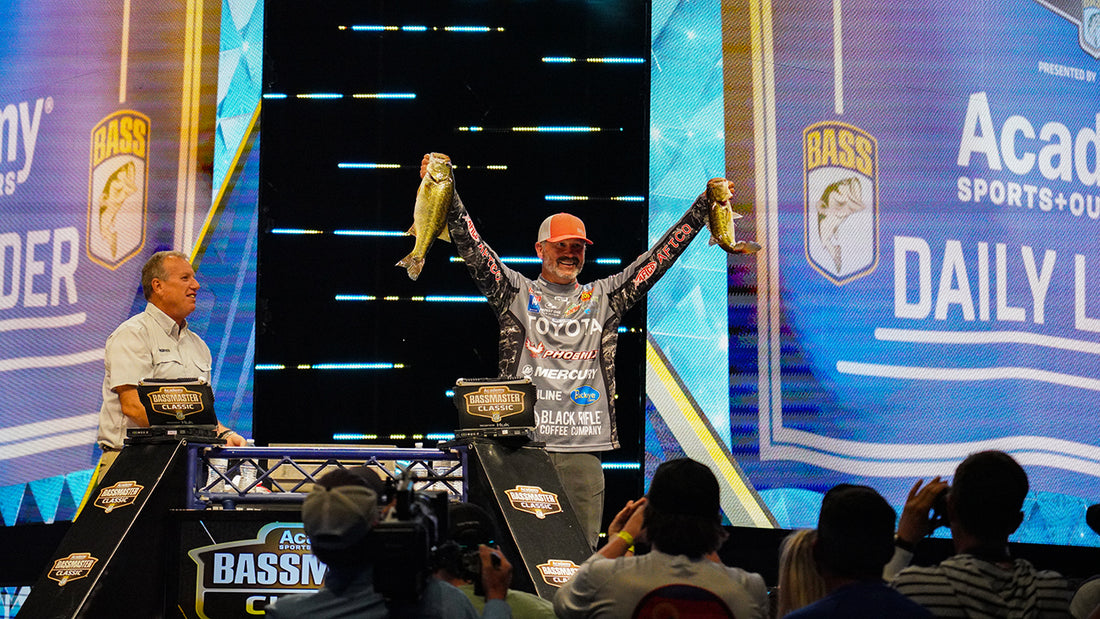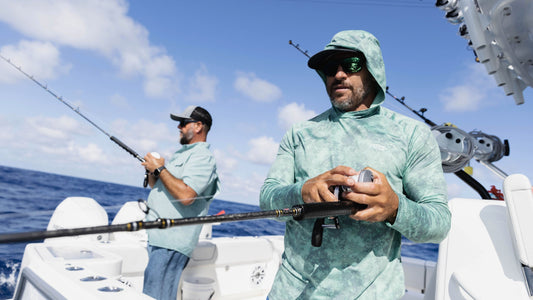
What Happens to the Bass After a Fishing Tournament?
The number one question B.A.S.S. conservation staff get asked when a tournament is heading to their town is “What happens to the fish after the tournament is over?” Gene Gilliland, the B.A.S.S. Conservation Director likes to say, “Well they go home”. But what does that process look like during the Super Bowl of bass fishing, the Bassmaster Classic where weigh-in is on average an hour away from the lake?
Let’s start with the basics. In 5 fish tournaments such as the Bassmaster Elite Series, the anglers keep their 5 largest bass in the livewell of their boats. The anglers have an incentive to do everything in their power to keep these bass alive because if one perishes, they receive a penalty. The anglers care of course about the fish but when ounces can cost you hundreds of thousands of dollars, one dead bass is an easy thing to limit with good fish care. Of course, things do happen and when an angler hooks a bass deep in the gullet, there’s nothing they can do and bass can die. This is sometimes the only reason we see bass dead after a tournament because the fish care during weigh-in is so effective now.

Typically, in a bass tournament, the weigh-in is on-site and bass care is incredibly easy. Things get complicated during events like the most recent Bassmaster Classic at Lake Hartwell. The lake was between forty-five minutes and an hour away from the weigh-in arena. This time period is critical, especially in years when the Classic is in a warm month. Either way, precautions always need to be taken to ensure the bass get from the lake to the weigh-in, and then right back to the lake alive and healthy. This is achieved largely in collaboration with the Department of Natural Resources of the host state. This year, the South Carolina DNR played an integral part in the releasing process for the fish.
This process starts with the anglers of course but when they get to the launch ramp to check-in, the real show of B.A.S.S. conservation begins. Every year, Conservation Directors from states around the country come to the Classic to volunteer to be on the bass care team. Some of these directors get stationed at the launch ramp. Their job is to check on the fish as they come in as well as provide ice to the anglers to put inside the livewells to keep the water temperature as close to the lake if not slightly colder. This aids in lowering the bass’s metabolism so they utilize less oxygen inside of the water. The boat’s oxygenators are set to stay on during the drive and any external oxygenators are provided if necessary. Another person you can find at the ramp is the Queen of Fizz, Barb Ellliot, the conservation director for the state of New York. Her involvement in the Elite Series with fizzing bass helped so many anglers in deep water late summer events during the smallmouth swing. She is at the ramp, you guessed it, to fizz any bass that look like they might be experiencing barotrauma. Scroll to the bottom of this piece to learn what Barotrauma is and what fizzing can do to help.
The anglers now work on getting their rigs to the arena, where they are met by another team of Conservation Directors and bass care volunteers to check on the bass again and provide more ice if needed. The bass get bagged here in the boatyard to make the process faster on the stage. Time for the biggest stage in bass fishing and where the viewers get their first glimpse of the bass.
The anglers weigh their fish. Dave Mercer screams out the weight, everyone cheers, the angler holds up two bass, and then boom, they’re gone. Well, what you missed was the tournament director taking the bag of bass and passing it below the weigh-in table through a little hatch. This little hatch has a great story to it. Meet Bill Frazier. He is the B.A.S.S. Conservation Director for North Carolina and has been the man in the hatch for 13 years going into 2022. He volunteers for this job because he loves the perspective he gets on this amazing tournament.

Every Bassmaster Classic, Bill is in charge of being under the stage and catching the hundreds of pounds of bass after they are weighed every day. Under the stage looks different every year and sometimes he is sitting on a box and sometimes he is crouched the whole weigh-in. It isn’t until after the stage is built that Gene Gilliland and his team can concoct a new method to get the fish from Bill to another person on the team to make the process as quick as possible. How quick? Bill has a method of timekeeping in his head and rarely does the process take longer. Bill says his whole process from the time the fish come out of the livewell until he passes it off is shorter than the time it takes for him to hold his breath twice.
Bill’s time-tested method of “catching” the fish is a large Rubbermaid container. He holds it up to the hatch in the stage and the fish get dropped right in. Since every stage is different, the next step differs Classic to Classic but he will pass the fish off to the next person. This year, this was a rolling dolly with two strings attached to each side. The tub gets placed on the dolly and the next person pulls the fish to them. Once they take the tub, Bill pulls the dolly back to his location.





The person who pulls the tub of fish passes it off to a runner who brings the fish to the staging area behind the stage where the South Carolina DNR team had two trucks ready to fill up with Hartwell bass to bring right back to the lake once the weigh-in was done. These experienced wildlife biologists spend the whole weigh-in checking on the fish inside the aerated trucks pulling individual fish that look like they needed attention. They also fizz any fish that look like they need it.






This is the full moving process and as you can tell, a lot of thought is given to ensure fish are not only out of the water for as little time as possible but once in the release truck, ensure they have the proper care to boost the probability of survival post-release. What this shows is the passion for conservation that all of these people have. Everyone involved in the process from the conservation director team are volunteers helping because they want to, not because they have to. Bill Frazier has been doing this for 13 years by choice and the dedication that he and the other conservation directors and volunteers have is what keeps the Bassmaster Classic having over a 95+% survival rate every year since they started this method.
What is Barotrauma and How to Fizz a Bass
Barotrauma is when a fish is caught from deep in the water column and is pulled up by an angler faster than it can naturally regulate its buoyancy. A fish uses its swim bladder to regulate its buoyancy and when forced up, the pressure becomes unequal. The swim bladder becomes bloated and over inflated because of the pressure change and this is barotrauma. You may notice a fish that has this keeps floating to the surface and turning on its side. If kept like that, the fish will float to the surface in the lake and die so a solution to help minimize barotrauma is to fizz the bass. Fizzing is using a needle to relieve the pressure in the swim bladder allowing for the fish to return to neutral buoyancy and be able to regulate its own pressure.







